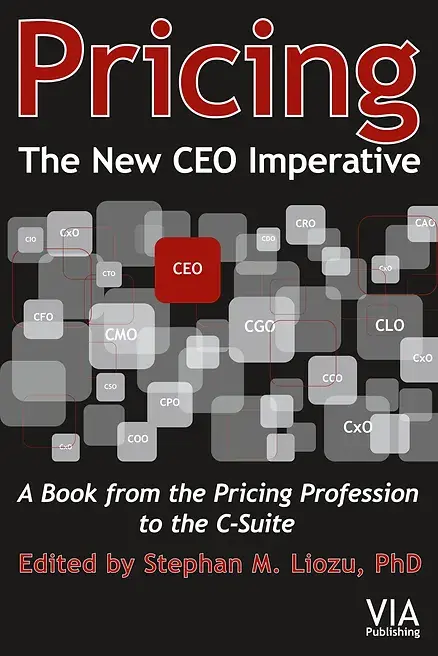Guide for Publishing Companies: Driving Willingness to Pay Online
 PriceBeam
·
4 minute read
PriceBeam
·
4 minute read

It has long been downhill for print media, and publishing companies have realized that they need to bet on the online experience to have a fighting chance. Many have done so quite successfully, and while revenues and margins are not as great as they used to back in the good old days, the decline hasn’t been as significant as anticipated.
However, the increasingly important online experience poses a variety of challenges for publishing companies whose focus has traditionally been on producing great content for their print newspaper, which couldn’t be customized – online, however, customization is not only possible, but also a key to driving willingness to pay. In this article, we look at some of the main differences in customer preferences, and how publishing companies can address these to drive up willingness to pay.
Customized Content Overview
Readers of traditional newspapers understood that the newspapers needed to meet the demands of a variety of readers, and would gently flip through the paper until they found an article that they found interesting. Of course, they would subscribe to the paper with the highest percentage of interesting articles, but nevertheless it was OK that not everything met their taste.
In a way, this hasn’t fundamentally changed today; but now that content can be customized to one’s tastes, the percentage of ‘interesting news’ is required to be much higher in order to compete; that is, people subscribe to the newspaper that can offer the most customized experience.
One way of customizing the online selection is through self-customization. The Financial Times and The Guardian, for example, allow their readers to select a variety of topics they find interesting; moreover, they present a few article examples to readers, asking them to click the ones they find interesting, hereby indicating the themes and topics that they would prefer to see on their front page.
Customization allows publishing companies to target a wider audience, but requires more sophisticated usage of customer data and behaviour patterns. It doesn’t matter how high quality your content is if it’s not shown to the right people.
Loyalty is a Thing of the Past
Back in the days, one’s choice of newspaper was almost based on ‘family-tradition’. Factors such as political opinions and religious beliefs, as well as social class, were determining which newspaper you subscribed to.
While there is still true today to a certain extent, there is almost no customer loyalty anymore, hence why customization is evermore important. The lesson here is what not to do: some publishers will see a clear emerging trend in their data, but choose to disregard it and refrain from addressing it, because it is not aligned with the preference of their traditional readership. But you may be attracting readers you never thought you would, readers who traditionally ‘belonged’ to another paper; and at the same time, one of your competitors may have caught the taste of your traditional readership. Listen to the data! We’re not saying the Financial Times should become a fashion magazine, but they do post the occasional article about suit fashion and guides on how to select the right tie; that’s because they listen to their readers, who may also be interested in this kind of stuff. And if they insist on sticking to business and finance news, well, then Bloomberg or The Economist will start writing guides on how to tie a tie, and the readers will be gone with the wind.
New Content Requirements
In the traditional newspapers, you were limited to letters and images. But online, you can offer much more than that; videos, for one!
And, of course, these videos should consider how subscribers watch them. For example, as Facebook launched the ‘autoplay with no sound’ feature in their newsfeed, it has become important to include subtitles and descriptions of graphs etc., so a video can be watched without sound.
Another emerging trend in online content is different courses: business newspapers, for example, offer different courses in financial modelling and other topics related to their news, which differentiates them from the competition and creates an additional revenue source for them. An article about food could refer readers to a cooking class, an article about fashion could include a link to a tutorial on sewing, and articles on finance can refer readers to a walkthrough of the technical analysis that underpins the case in the article.
Readers of newspapers want to educate themselves on different topics, and offering different courses and further learning material is a way to enhance this experience. Of course, your course on financial modelling isn’t what grabs the attention, but it’s a nice supplement to the traditional content. And, we can’t stress this enough, it can prove to be a quite significant source of revenue and a great way to utilize your brand.
Social Media Matters
Obviously. Social media is no longer the new black, but the social media companies move at an incredible pace – and as with our example above with the video, publishing companies need to consider new and existing features when creating content. LinkedIn now supports videos and Instagram has ‘stories’, so every time a new feature is launched, it’s important to ask yourself what that means for the way that people interact with your social media page, and how they act with social media in general. It requires some out-of-the-box thinking, especially if your news isn’t what you’d typically expect to see on those platforms, but when the Financial Times can gather 500k followers on Instagram, there’s surely a way you can use such a platform, too.
PriceBeam’s Own Experience with Media: Prices Are Too Low
We have previously helped publishing companies price their online content, and in particular their subscriptions, and our research consistently shows that prices are too low. Even a small price increase can lead to a substantial increase in profit, and therefore, researching willingness to pay really pays off.
That’s one of the reasons why we take the time to write an article like this: because we know that many companies facing the challenges we discuss in this article can really benefit from our research: our track record speaks for itself
If we have sparked just a tiny bit of curiosity, click the banner below and get your free pricing demo, which includes a brief presentation of the results we have created for publishing companies in the past.
.png?width=400&height=100&name=PBLogoTransparent%20(1).png)




